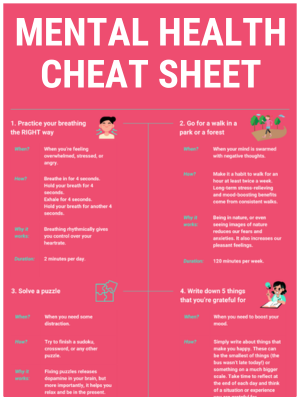At face value, being told you can simply change your mind to be happy may almost seem insulting. If it was as simple as thinking differently right now, you’d do it. While evidence suggests we can change our minds to be happier, it’s not quite as simple as that sounds.
There are many ways people can change their mindsets about things. They could change their job, do more exercise, and seek meaningful relationships. Some things work from the outside in and some the other way around. But one way or another, it is widely believed and often shown to be true that we can change our mind frames and create happier ones.
What does changing our minds mean, though? Does it mean changing things in our external lives to consequently change our internal mindset? Or does it simply mean changing your mind directly by thinking differently? In this article, we’ll look at some of the ways people do it, and how by using real examples.
Contents
Can we really change our mindset to be happier?
Our emotions, our minds, and our lives are all inextricably dependent on each other. If we lose our job we may become unhappy and think negatively. If we cultivate happy emotions, it can translate into positive thinking and doing well in work and relationships.
It would follow, then, that changing our thinking directly could change our emotions and our lives.
A 2005 study, among others, demonstrated just this. Though it isn’t as easy as simply thinking positive thoughts one day. It’s a practice, if not already a default, through which the rewards are significant but perhaps gradual.
Therein lies the issue, as it can be hard to practice something without knowing if or when it will pay off. It’s hard to cultivate and maintain positive thinking patterns while feeling otherwise.
There are many ways to do so, however. It’s simply a matter of finding the thing that works for you.
Thorough research by The British Psychological Society in 2001, showed that mindfulness-based cognitive therapy (MBCT) improved mind frames and outlooks on a plethora of issues. From depression to physical illnesses and negative life-changing events, people found that after practicing MBCT they experienced significantly less negative mental and emotional fallout.
Therapeutic and mental practices like this can help with a range of issues, such as:
- Relaxation.
- Coming to terms with things.
- Distress and depression.
- Acceptance.
- Breakdown.
- Difficult thoughts.
Both mindfulness and CBT respectively can be useful tools to change the way we think and emotionally react to our thoughts. Particularly this is useful when dealing with negative thoughts and emotions, to reduce both the potency and duration. As a result, this leaves room for a more balanced view and a positive outlook.
I myself have used such coping strategies and found them to be useful. Having practiced mindfulness, meditation, and CBT, more and more often I find I am able to deal with negative mental, emotional, and even physical experiences better.
For example, I recently had a significant toothache that was quite distressing. To even my surprise, when I took a mindful approach I reacted less negatively, both emotionally and mentally.
💡 By the way: Do you find it hard to be happy and in control of your life? It may not be your fault. To help you feel better, we’ve condensed the information of 100’s of articles into a 10-step mental health cheat sheet to help you be more in control. 👇
Perform activities that improve your mindset
Conversely, it has been found that an outside-in approach to improved wellbeing is also effective.
People who routinely exercise or practice yoga improve their happiness as a result. Building more of these elements into our lives, especially ones that might otherwise be unaddressed, also naturally creates a more positive mind frame.
Exercise is perhaps the best external practice for improved mood. Due to its simplicity and little to no cost, it is universally prescribed as an effective course of action for mental illness.
It has been shown in studies to not only improve physical health (which itself has a knock-on effect on our mental state) but to reduce stress and improve moods. All of this ultimately leads to a changed mentality and increased happiness.
Another external factor is that of personal fulfillment, which can build up our positive outlook, self-esteem, or self-worth. This might include:
- Doing things that give a sense of achievement or accomplishment.
- Expressing creativity.
- Feeling valued in and valuing relationships.
- Helping people.
- Indulging pleasures.
- Self-reflection.
- Self-care journaling.
- Doing things that give a feeling of control.
- Expressing personal values
Working on these important aspects of our lives, putting more time and energy into them, can produce long-standing existential improvement.
It can build resilience to life’s curveballs and increases happiness throughout.
Examples of mind-changing practices that create more happiness
Whether we want to change our minds and increase happiness through external action or internal inspection, the point is it can be done. By whatever means, our happiness or unhappiness is not beyond our control. It may simply be a matter of finding the right course for us.
I believe that direct change in our thoughts is the best way to change our minds and moods permanently. Changes in our lives can and do build happiness but may not teach us for good how to avoid destructive, negative thinking.
No matter what life throws at us, by practicing direct change in cognitive processes, we can be better equipped to deal with all situations. Even if we’re out of practice at the gym and other parts of our lives aren’t going the way we want them to.
For that reason, I’d start with examples of the introspective practices that can change the way we think, improving our moods and livelihoods as a result.
1. Practice mindfulness and meditation
Mindfulness and meditation are powerful ways to train our minds. Because of this, it breaks down resistance to ourselves and to negativity when it arises, thus building resilience and avoiding cycles of suffering.
2. Practice gratitude
Gratitude trains our brains to recount the positive things in life, the things we appreciate and are thankful for.
The more we do this, the less we allow negativity to affect us, as it is balanced against our focus on the positives. In this way, an unbroken fog of doom and gloom is prevented.
3. Practice positive affirmations
Affirmations can be said to work in a similar way to gratitude, only instead of valuing positive things in our lives, we draw attention to things we value in ourselves.
The more we actively value ourselves, the more self-worth, self-love, and esteem we manufacture. I don’t think I need to point out the effect improved opinions of ourselves would have on our happiness.
4. Try therapy
Therapy is an excellent way to change the way we think over time. Instead of going through the same negative spirals over and over, a therapist can lead us out of such loops and into a more helpful way of thinking. Though it can take time to do so, the effects also last a long time.
If introspection isn’t your thing, however, fulfilling our personal needs is the way to go to change outlooks and create happiness.
5. Exercise more
Exercise is good for our physical and mental health. It creates endorphins, a sense of achievement, or even improved social lives. It’s easy to turn a nose up at exercise and avoid dusting off the running shoes, but I don’t believe it has to be as laborious as it might seem to some.
Exercise can be anything from badminton to rock climbing, from martial arts to yoga, or even just a walk. There are a million ways to reap the happiness that exercise can cultivate, it’s a simple matter of finding the exercise that appeals to us.
6. Fulfilment & aspirations
The most well-rounded way of changing our life’s perspectives is by paying attention to our personal needs.
Hitting all of our personal needs can be difficult, but doing so does improve well-being in perhaps the most effective way possible.
A quick google of ‘wellbeing wheels’ and the like can bring up some good examples of all the different parts of ourselves that need attention. It can be helpful to get an idea of what we’ve got going right, and what may need more attention to improve our happiness.
7. Social relationships
Nurturing relationships in life can have numerous benefits. We are social creatures by nature and generate endorphins through simple social interaction.
Furthermore, socializing can bring us back down to earth and out of the stresses or rumination that might otherwise be plaguing us.
Time with others can provide a normalizing, real-world escape, a place to vent, or a place to help others and feel good about that (not only bringing you out of your own worries but inspiring a sense of value).
💡 By the way: If you want to start feeling better and more productive, I’ve condensed the information of 100’s of our articles into a 10-step mental health cheat sheet here. 👇
This Cheat Sheet Will Help You Be Happier and More Productive
Thrive under stress and crush your goals with these 10 unique tips for your mental health.
Wrapping up
Though simply changing our minds in order to feel happier may seem simplistic and farfetched, it is something we can do.
The simple part (okay, maybe not that simple) is finding and choosing a way to do so that suits you. Whether it’s mindfulness, CBT or working on entirely other aspects of our lives to have a knock-on effect, the good news is we’re spoiled for choice with ways to create more happiness.
No matter what path we take, the end result will be an improved mentality. It’s only a matter of taking a path, and if it’s not to our liking taking another. Sometimes, doing so can feel counter to how we feel, but as someone once told me, motivation comes after action, not before.



